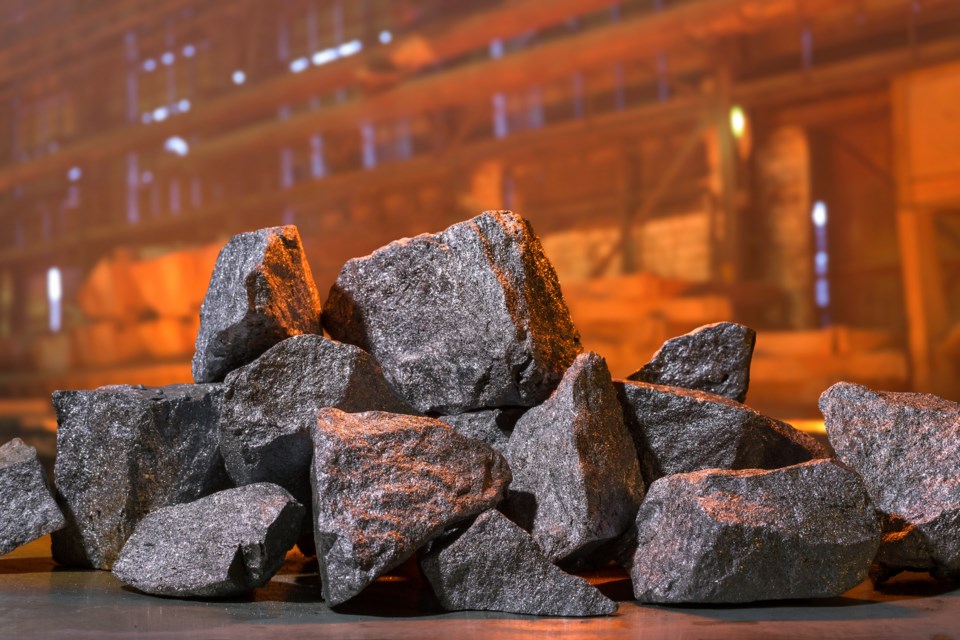SooToday received the following letter from Dr. Rob Suppes on behalf of doctors concerned about a proposed ferrochrome smelting plant:
Should Sault Ste. Marie have a ferrochrome smelter built in the city? This is a critical question facing our community.
A smelter would provide direct economic benefit to several hundred people and to associated businesses. We physicians are very concerned about the risk of contamination of the surrounding environment with chromium VI, a by-product of smelting that is a known cancer-causing agent.
The smelter is to be located next to the Steel Mill, within the city and next to a major waterway, increasing the risk to our population.
Such an important decision requires that our community understand these risks so they can better assess the costs and benefits of bringing this smelter to Sault Ste. Marie. Citizens need to be made aware of several facts.
As such, after considerable research, we present a number of these facts here:
- Compared to other cities in Ontario, Sault Ste. Marie has increased rates of lung, bronchus, bladder, kidney, renal pelvis, and esophageal cancers (1,2).
- A 2019 study showed that the rate of Acute Myeloid Leukemia was 50 per cent higher in Sault Ste. Marie than in the rest of Canada. The rate was more than double the Canadian average for those living in the P6C area code around Algoma Steel (3).
- Chromium VI, a known cancer-causing agent, is produced even in the cleanest ferrochrome smelting production (4). Research demonstrates that exposure increases the risk of multiple cancers: liver, kidney and female genitourinary, lung, lip, oral cavity, pharynx, stomach, female breast, female colon, prostate, and leukaemia (5).
- These cancers were the result of exposure to both welding fumes and contaminated drinking water.
- Chromium VI is dangerous for humans and increases the risk of cancer and subsequent death with increased exposure over time (6).
- Much of chromium VI waste is contained in slag ponds (4); there are no data on how safe such ponds would be in Sault Ste. Marie’s unique climate. Many of the health risks of chromium VI show links to airborne contamination (4, 7, 8, 9).
- Noront has released details of the proposed smelter for Sault Ste. Marie stating that the basis for the design will be the ferrochrome smelter in Tornio, Finland (10,11). This smelter, which is currently the most advanced in the world, has significant documented pollution of the surrounding environment with carcinogenic chromium VI (7,8, 9).
- There is currently no ferrochrome smelter in the world that doesn’t contaminate the surrounding environment; even the most technologically advanced smelter releases some chromium VI (4).
- Current Ontario law requires self-reporting by heavy industry, but many of these industries circumvent these regulations by paying relatively small fines for infractions or applying for exemptions from environmental regulations (12,13).
At this time, we have no idea if or how Noront plans to address the above issues.
Before citizens can make an informed decision, Noront must answer difficult questions with detailed explanations and plans. Noront must provide scientific evidence to back up any claims that are not substantiated by scientific research or evidence from other ferrochrome smelting facilities.
Noront is hosting a consultation on Oct. 23 from 3-8 p.m. at the Delta Sault Ste. Marie Waterfront. We hope the information provided here better prepares the citizens of this city to demand answers.
Signed,
Dr. Suppes
Dr. Skelton
Dr. Parsons
Dr. Kelly
Drs. Schamp
Dr. Hirvi
Dr. Dawson
Dr. Shafiee
Dr. Kobelka
Dr. Coccimiglio
Dr. Opryszczko
Dr. Vance
Dr. Chow
Dr. Jenkins
Dr. Joseph
Dr. Ghosh
Dr. Buehner
Dr. Wytsma
Dr. Babik
Dr. Micomonaco
Dr. Webb
Dr. Cassalman
Dr. Bragaglia
Dr. O’Brien
Dr. Booth
Dr. Sharp
Drs. Baath
Dr. Lee
Dr. Kuntz
Dr. Jarrett
Dr. Bouchard
Dr. Kargbo
Dr. Stevenson
Dr. Apostle
Dr. Bruni
Dr. Landry
Dr. Fam
Dr. Tull
Dr. Leahy
Dr. Bowen
Dr. Fera
Dr. Keuhl
Dr. Antunes
Dr. Mohammadi
Dr. Trusdale
Dr. Hemy
Dr. Rawn
Dr. Rebelo
Dr. Jenkin
Dr. Culina
Dr. Mozarowski
Dr. Barbeau
References:
(1) Cancer Care Ontario. Cancer Statistics by Public Health Unit. 2018
(2) Algoma Public Health Unit. Algoma Cancer Report 2015
(3) Ghazawi, F.M., et al. Analysis of Acute Myeloid Leukemia Incidence and Geographic Distribution in Canada From 1992 to 2010 Reveals Disease Clusters in Sarnia and Other Industrial US Border Cities in Ontario. Cancer 2019;125:1886-1897
(4) Beukes et. al. Review of Cr(VI) environmental practices…Relevance to development of the Ring of Fire. Journal of Cleaner Production 165 (2017) 874-889
(5) Linos et. al. Oral Ingestion of Hexavalent Chromium through drinking water and cancer mortality…Environmental Health 2011, 10:50
(6) Gibb H. et. al. Lung Cancer among workers in chromium chemical production. American Journal of Industrial Medicine 2000;38(2):115-126
(7) M. Vanhanen, Finnish Environmental Institute Report 1999
(8) Poykio et. al. Heavy Metals…and assessment of human exposure in two industrial areas in the Kemi-Tornio region... Arch. Environ. Contam. Toxicol. 48, 338–343 (2005)
(9) Outokumpu Annual Report 2018 (10) http://norontresources.com/projects/ferrochrome-production-facility-2/
(11) Keown, M. Can’t compare smelters, Sudbury crowd told. The Sudbury Star, March 22, 2018.
(12) Bruser, McLean and Bailey. Dirty Dollars. The Toronto Star, November 30, 2017.
(13) Crawley, Mike. Eight companies that won’t have to meet Ontario’s new pollution limits. CBC News, February 4, 2016.
